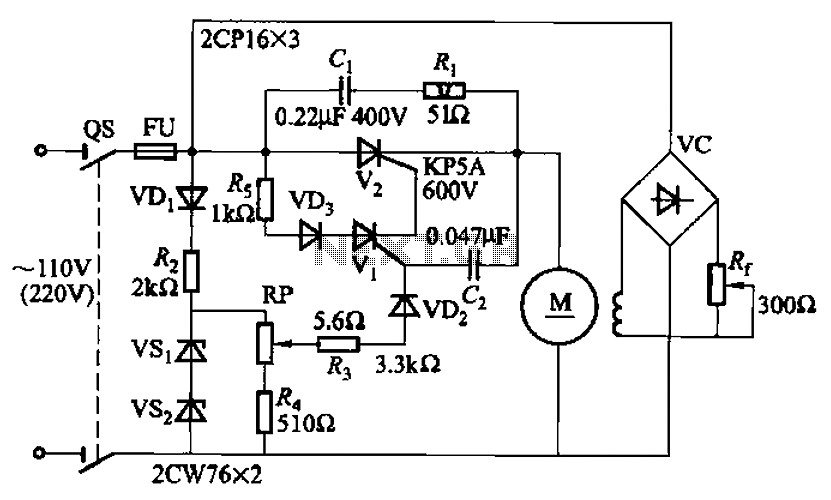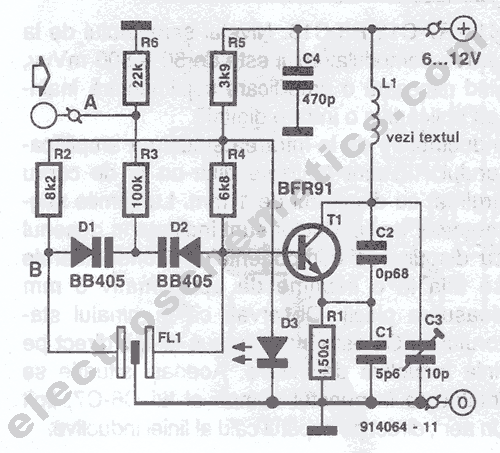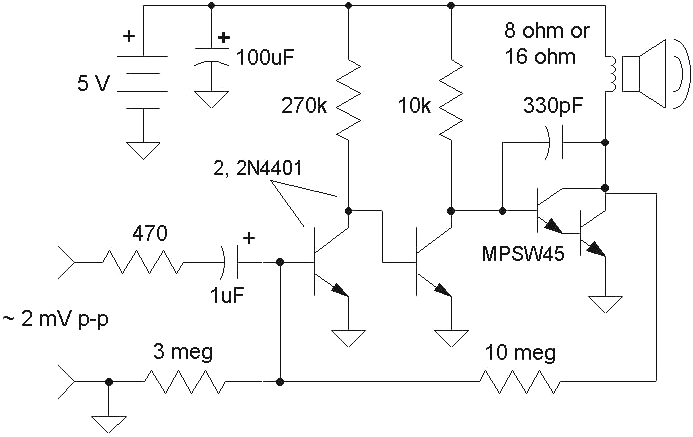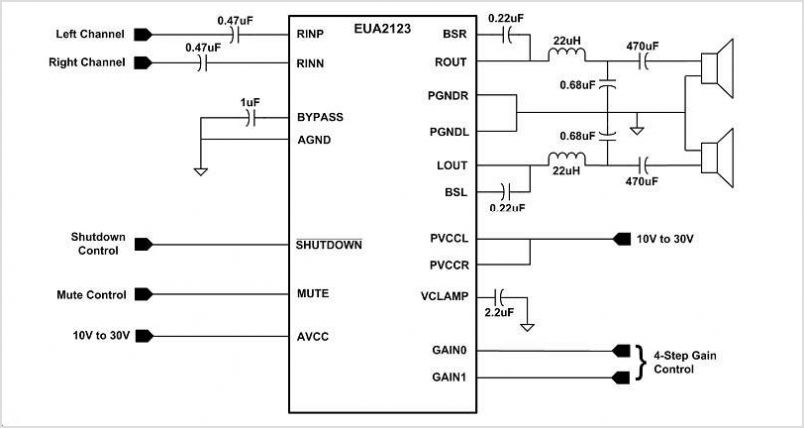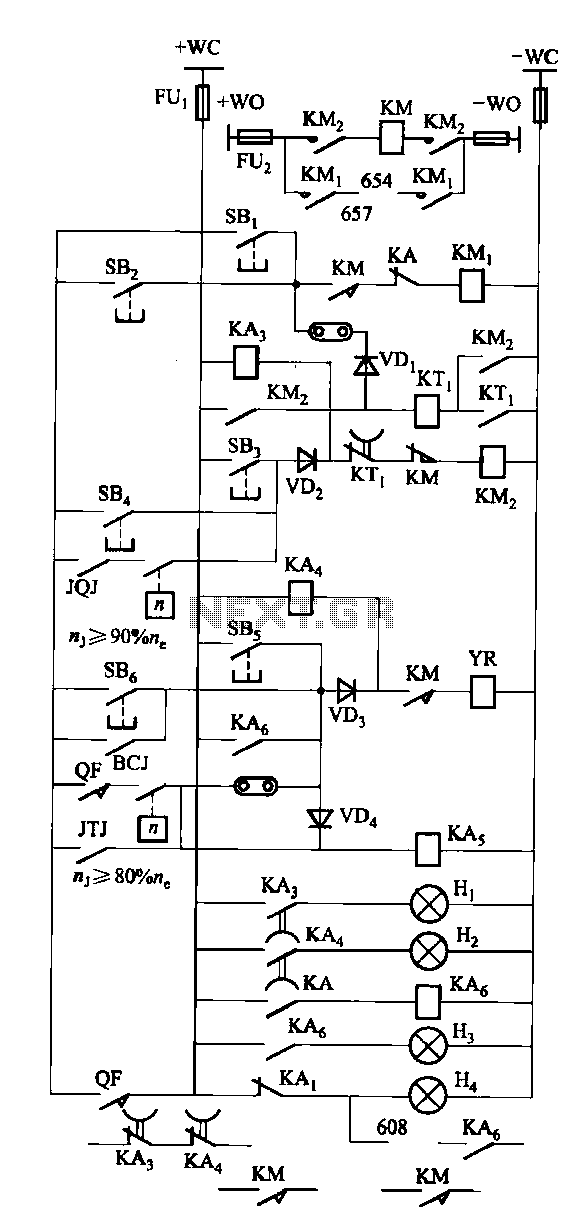
Class A Preamplifier Circuit
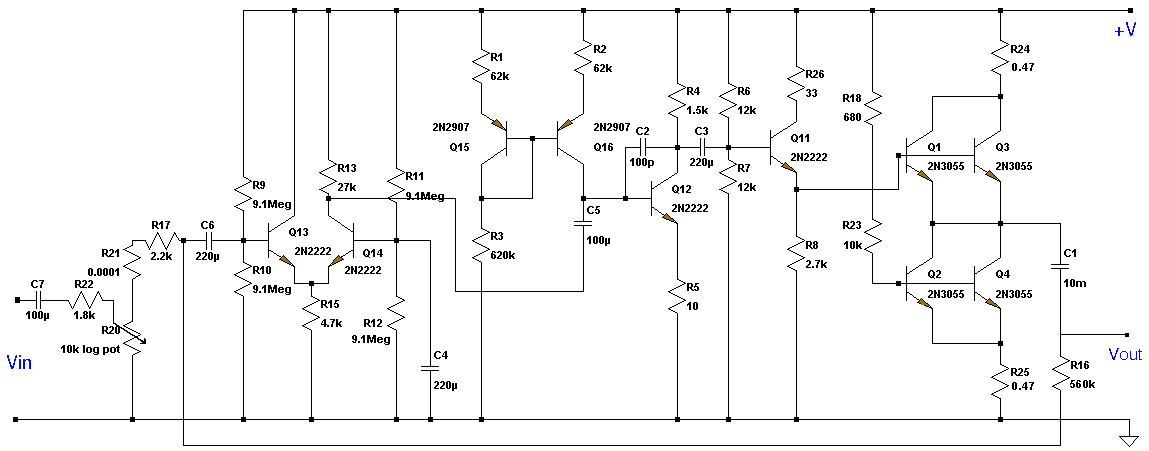
This Class A preamplifier features a symmetrical design. The input differential stages utilize dual transistors, T1 and T2. Polarization correction is crucial due to amplification discrepancies and is managed by transistor T12. Potentiometer P2 adjusts the output voltage to zero. For optimal performance, the surfaces of transistors T7 and T9 must be in contact, as well as those of T8 and T10. The repose current for T9 and T10 is set to 20mA using potentiometer P1. The frequency bandwidth of the circuit is 2.4 MHz.
This Class A preamplifier circuit is designed to provide high fidelity signal amplification with minimal distortion. The symmetrical structure allows for balanced signal processing, which is essential in audio applications to maintain signal integrity. The use of dual transistors T1 and T2 in the input differential stage enhances the circuit's ability to reject common-mode signals, improving the overall noise performance.
Transistor T12 plays a critical role in ensuring polarization correction, which compensates for variations in transistor characteristics that can lead to unequal amplification. This correction is vital for maintaining linearity and stability across the operating range of the preamplifier. The adjustment of output voltage to zero via potentiometer P2 allows for fine-tuning of the circuit, ensuring that any DC offset is eliminated, which is particularly important when interfacing with subsequent audio stages.
The contact between the surfaces of transistors T7, T9, T8, and T10 is critical for thermal stability and performance consistency. Proper thermal management prevents thermal runaway, which can adversely affect the circuit's performance. The repose current adjustment for T9 and T10, set to 20mA with potentiometer P1, allows for precise control of the biasing conditions, further enhancing the linearity and efficiency of the amplification process.
With a frequency bandwidth of 2.4 MHz, this preamplifier is capable of handling a wide range of audio frequencies, making it suitable for various applications, including high-fidelity audio systems and professional audio equipment. The design emphasizes reliability and performance, ensuring that the preamplifier meets the demands of modern audio processing while maintaining high standards of sound quality.This class A preamplifier has been designed in a symmetrical structure. In the input differential stages we`ve used the dual transistors T1 and T2. Polarisation correction is essential because of the amplification differences and is assured with T12. P2 brings the output voltage to 0. For maximum performances, T7 and T9 surfaces must be in contact , also T8 and T10 surfaces. The T9 and T10 repose current is adjusted to 20mA with P1. Frequency bandwidth is 2. 4MHz. 🔗 External reference
This Class A preamplifier circuit is designed to provide high fidelity signal amplification with minimal distortion. The symmetrical structure allows for balanced signal processing, which is essential in audio applications to maintain signal integrity. The use of dual transistors T1 and T2 in the input differential stage enhances the circuit's ability to reject common-mode signals, improving the overall noise performance.
Transistor T12 plays a critical role in ensuring polarization correction, which compensates for variations in transistor characteristics that can lead to unequal amplification. This correction is vital for maintaining linearity and stability across the operating range of the preamplifier. The adjustment of output voltage to zero via potentiometer P2 allows for fine-tuning of the circuit, ensuring that any DC offset is eliminated, which is particularly important when interfacing with subsequent audio stages.
The contact between the surfaces of transistors T7, T9, T8, and T10 is critical for thermal stability and performance consistency. Proper thermal management prevents thermal runaway, which can adversely affect the circuit's performance. The repose current adjustment for T9 and T10, set to 20mA with potentiometer P1, allows for precise control of the biasing conditions, further enhancing the linearity and efficiency of the amplification process.
With a frequency bandwidth of 2.4 MHz, this preamplifier is capable of handling a wide range of audio frequencies, making it suitable for various applications, including high-fidelity audio systems and professional audio equipment. The design emphasizes reliability and performance, ensuring that the preamplifier meets the demands of modern audio processing while maintaining high standards of sound quality.This class A preamplifier has been designed in a symmetrical structure. In the input differential stages we`ve used the dual transistors T1 and T2. Polarisation correction is essential because of the amplification differences and is assured with T12. P2 brings the output voltage to 0. For maximum performances, T7 and T9 surfaces must be in contact , also T8 and T10 surfaces. The T9 and T10 repose current is adjusted to 20mA with P1. Frequency bandwidth is 2. 4MHz. 🔗 External reference
